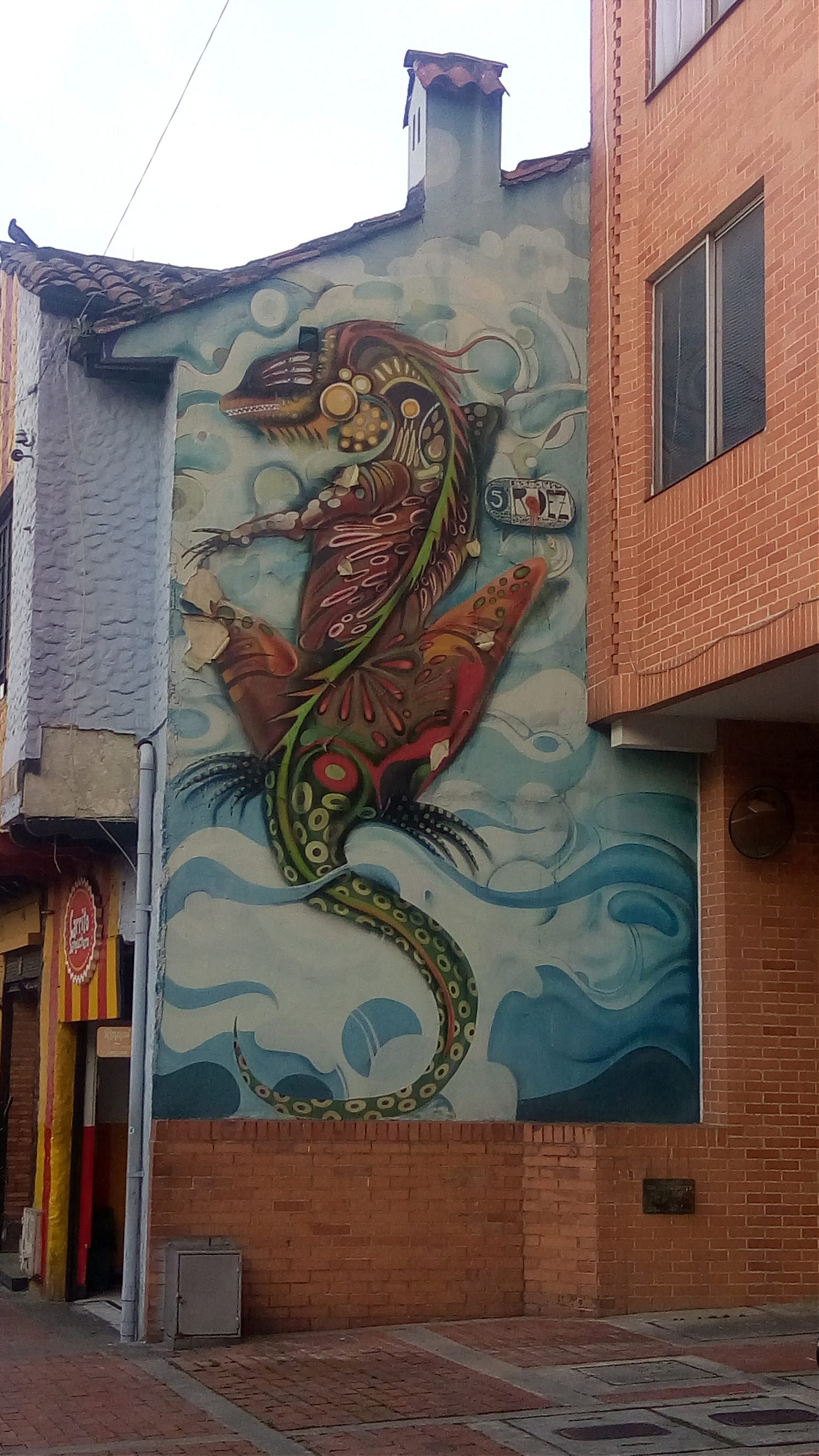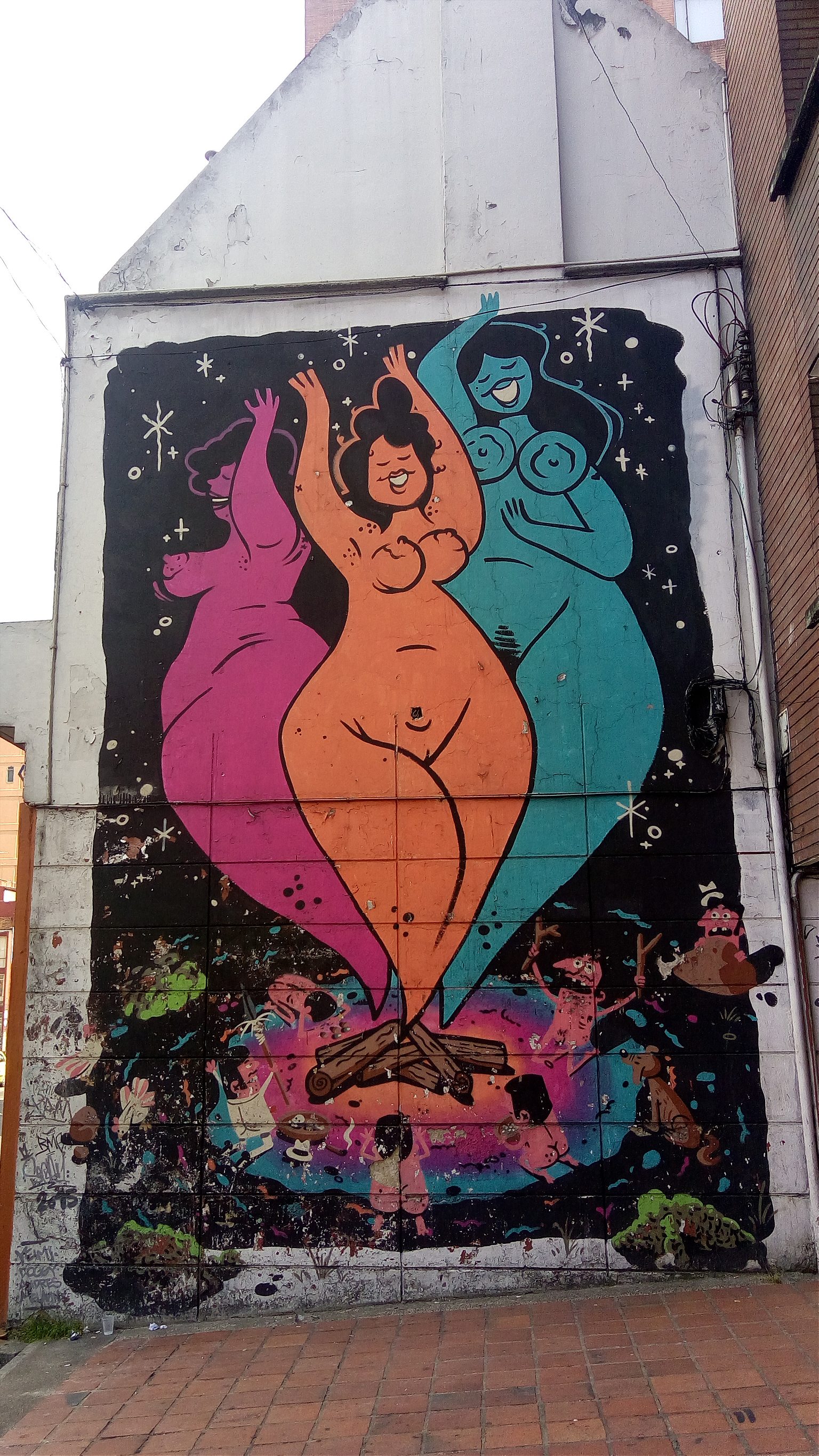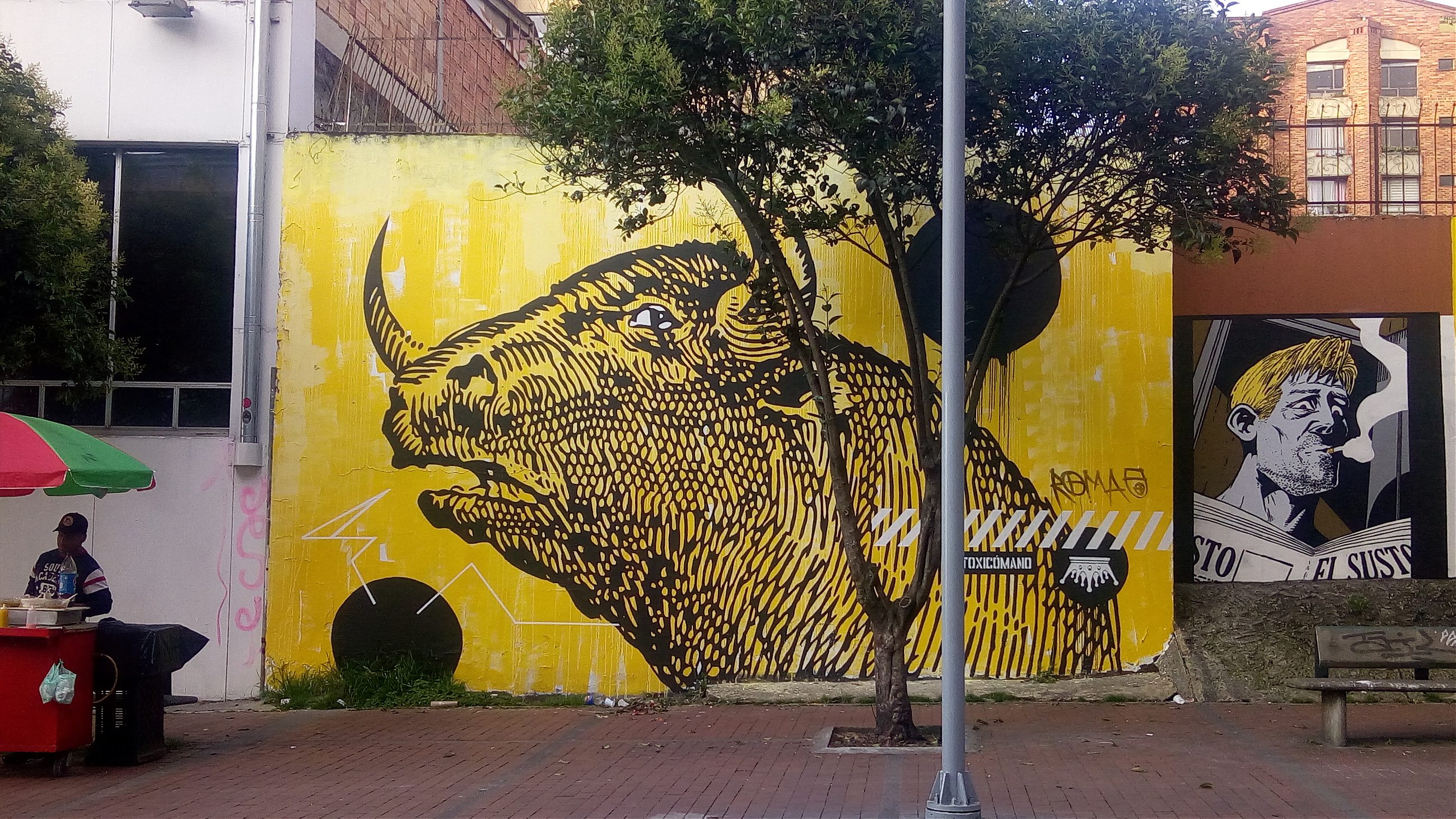Bogotá is, hands down, one of the best places in the world to see street art.
Bogotá is, hands down, one of the best places in the world to see street art. In recent years, graffiti has taken over the city, thanks to the work of more than 8,000 artists and benevolent local laws—graffiti is a violation, not a crime that’ll land you in prison.
Let’s start the tour from Chapinero, one of the city’s 20 districts, locally referred to as localidades. Its eastern side is an upper-middle class residential area, while its western side is known for commerce and entertainment, including a vibrant gay club scene. First, we need to talk about our roads, all of them numbered. If they run east to west, they are called calles (their numbers go up the farther south or north you are from downtown; if you are south from downtown, the streets have an “S” next to their number). If the streets run from south to north, they are called carreras (something like avenues; numbers go up as you go west).
Start at the intersection of Calle 45 and Carrera 7, close to Universidad Javeriana. Heading west through Calle 45 for a dozen blocks, on a straight line, you can get to La Soledad neighborhood and its Parkway—a park between street lanes featuring bars, cafés, theaters and restaurants—and to Universidad Nacional, the most important campus in the country. Walk one block, going west looking for Carrera 8. Half a block up on the right, next to a five-story brick building, you’ll see the many-eyed lizard—the work of Rodez, a professional artist, illustrator and university teacher. Rodez is known for his style using multiple eyes: when you’re looking at the wall, his paintings are looking right back at you.

If you’re hungry from the walk already, you’ll want to head straight to Carrito Sanguchero, which specializes in Peruvian street food, right next to the graffiti.
Now go back to Carrera 7 and head north. A couple of buildings after Calle 46, to your right, you will find a roller shutter painted over. In Bogotá, roller shutters are canvases for all kind of graffiti, from regular tags to astonishing murals. At night or early in the morning, Chapinero’s most commercial area—around Carrera 13—turns into an art gallery, with the stores’ roller shutters displaying beautiful works. When the shutters open for business, you’re at La Valija de Fuego, a local café and bookstore, perfect for a cup of afternoon coffee.

Got your caffeine recharge? Head north, and right before Calle 49, and you see a wall with three voluptuous women in three colors, completely naked, emerging from a bonfire, summoned and worshipped by small cartoon men, some of whom are also naked. Saga Uno, the local artist who painted it, had fallen in love with a voluptuous woman who taught him how to dance. He has been painting cartoon versions of her ever since, while his male characters are inspired by the thugs he heard about in popular salsa songs.

Thirsty for a beer? Walk a block north and you’ll end up at Bodega BBC (Bogotá Beer Company), one of the many locations set up by the local craft beer brewery in the city.
Walking on the sidewalk across Calle 49 and right before Calle 50, you’ll notice a big wall painted by five artists. The last one, showing an old woman in green painting, is actually the portrait of a silletera. Silleteros are flower vendors who arrange their flowers in complex patterns and wear them on their backs, mounted on chair-like wooden stands. They are a typical sight in Medellín. Next to her face, a speech bubble shows a game of tic-tac-toe, in which the circles and crosses turn into bullseyes and machine guns, displaying the phrase “No one wins” in Spanish. The artist, who goes by DJLU, is an anonymous university teacher who is known for more than 200 politically-charged pictograms.

After Calle 50, jump four blocks straight to the north, where designer shops line up together with fast food restaurants and bars. On Carrera 6—one block to the east—and Calle 53, you’ll find Amen Ramen, one of the handful of restaurants trying to make ramen happen in the city. Also, cocktails.
Not in a mood for ramen? Three blocks away, on Calle 56, there’s Doméstica, a café with a gorgeous outdoor patio—a somewhat rare sight in the city—and a healthy menu. Chapinero’s busiest commercial area, on Carrera 13, is not far from here. If you keep heading west through Calle 53 for a dozen blocks, you will get to Galerías, an entertainment area full of bars and clubs.
Just past Carrera 10, another wall with work by several artists pops up. One of them shows a stencil bull in a yellow background. The signature reveals its creator: national stencil legend Toxicómano Callejero, a professional publicist who loves to mock advertising techniques and mass media. His walls are all about politics and irony, with environmental messages scattered here and there.

Pat yourself on the back, because that’s a lot of walking you’ve done. To replenish your energies, head back towards Carrera 7 on the southern side of Calle 7. At the corner, you’ll find Panélate, a cafe set up to celebrate panela, a sweet delicious block made from sugarcane and usually boiled into one of the national drinks, aguapanela. You’ll most certainly appreciate it after the walk.
Find Bogota Graffiti Tour on Instagram and Facebook.